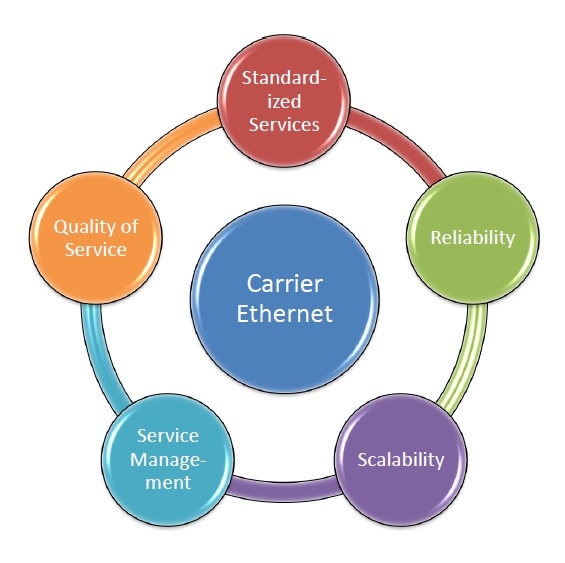
 Data Structure
Data Structure Networking
Networking RDBMS
RDBMS Operating System
Operating System Java
Java MS Excel
MS Excel iOS
iOS HTML
HTML CSS
CSS Android
Android Python
Python C Programming
C Programming C++
C++ C#
C# MongoDB
MongoDB MySQL
MySQL Javascript
Javascript PHP
PHP
- Selected Reading
- UPSC IAS Exams Notes
- Developer's Best Practices
- Questions and Answers
- Effective Resume Writing
- HR Interview Questions
- Computer Glossary
- Who is Who
What is Carrier Ethernet?
Carrier Ethernet is an application of Ethernet technology that allows network providers to offer Ethernet services to their customers and to use Ethernet technology. It enables Internet access and communication among local area networks (LANs) of business, academic, private and government organizations.
The services and standards of carrier Ethernet have been defined by the Metro Ethernet Forum (MEF). MEF has also developed certification programs and it promotes the global adoption of carrier Ethernet.
Carrier Ethernet versus Ethernet
The primary attributes of Carrier Ethernet that differentiates it from Ethernet are −
A carrier Ethernet network provides service to many organizations, while an Ethernet LAN renders service to only one organization.
A carrier Ethernet network covers a wide area and so spans outside a single building. On the other hand, an Ethernet serving a LAN is typically located within a building.
For connecting to a carrier Ethernet, the entire organization connects to a particular carrier Ethernet port; while, in Ethernet LAN each user connects to a dedicated Ethernet port.
Features of Carrier Ethernet
The five distinguishing features of carrier Ethernet are −

Standardized Services − Carrier Ethernet provides standardized, ubiquitous services which are Ethernet Virtual Private Line, Ethernet Virtual Private LAN, and Ethernet Virtual Private Tree.
Reliability − It is mandatory that carrier Ethernet can detect faults and recover from them without impacting users. Reliability is achieved through Service Operation, Administration and Maintenance (SOAM).
Scalability − The services need to be scalable in nature. Scalable bandwidth ranging from 1 Mbps to 1 Gbps is provided by iConverter NIDs.
Service Management − The network providers should be able to monitor, diagnose and manage their networks. The service management implementations need to be standards-based and vendor-independent.
Quality of Service − Carrier Ethernet needs to provide Quality of Service (QoS) in the services provides. The performance is maintained by Service Level Agreements (SLAs) regarding voice, video, and data.
Services Provided by Carrier Ethernet
In order to create a market, carrier Ethernet has classified some standardized services, which are as follows −
Ethernet Virtual Private Line or E-Line (EVPL) − This provides point to point connection between two carrier Ethernet customers. It provides high transparency, low latency, and reduced frame loss ratio.
Ethernet Virtual Private LAN or E-LAN (EVP LAN) − This provides a multipoint connection among a set of customer endpoints, thus forming a bridged Ethernet network among various customers. Service multiplexing enables any – to – any communications between the customers. It lowers frame delay and frame loss ratio.
Ethernet Virtual Private Tree or E-Tree − This is an Ethernet VLAN configuration that provides multipoint connection among a set of customer endpoints or node, which are arranged in the form of a tree. This allows any – to – any communications with the restriction that nodes in the leaves cannot communication directly with one another.

